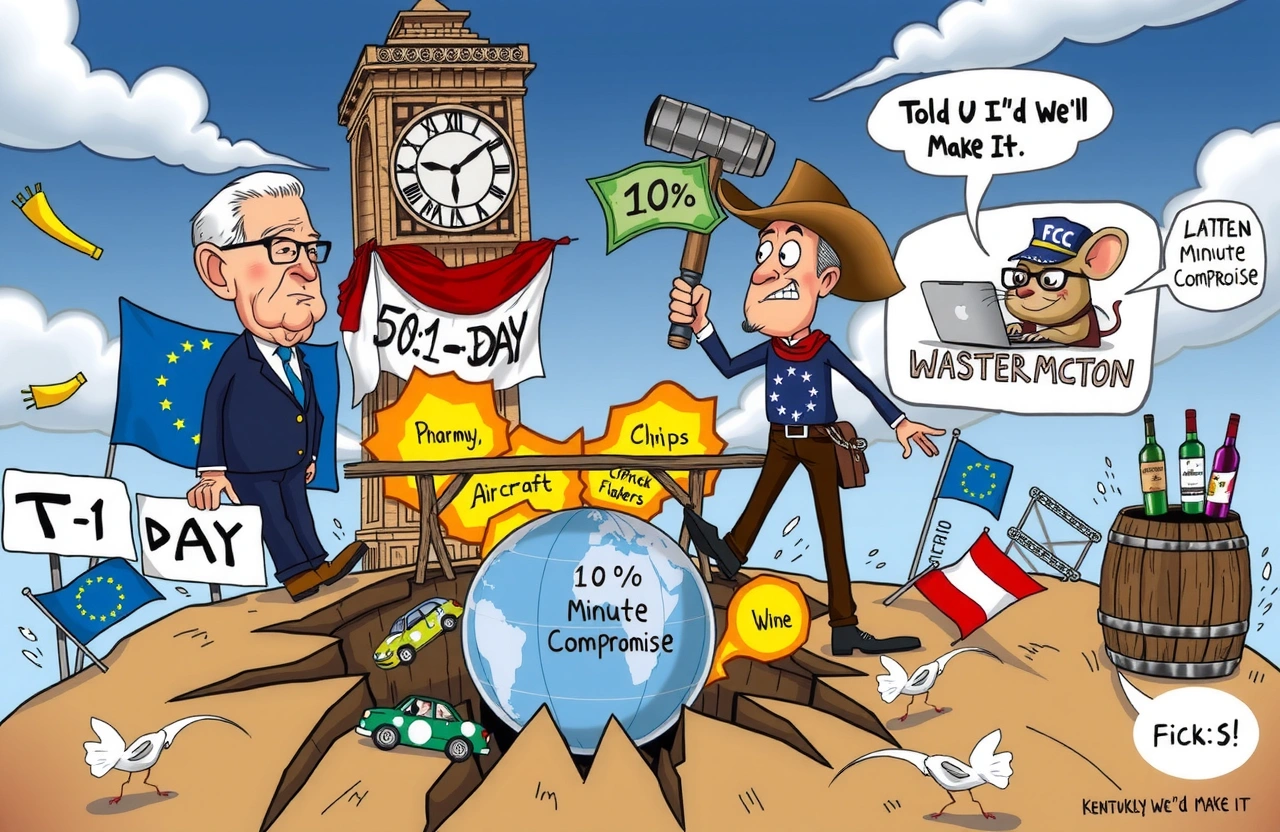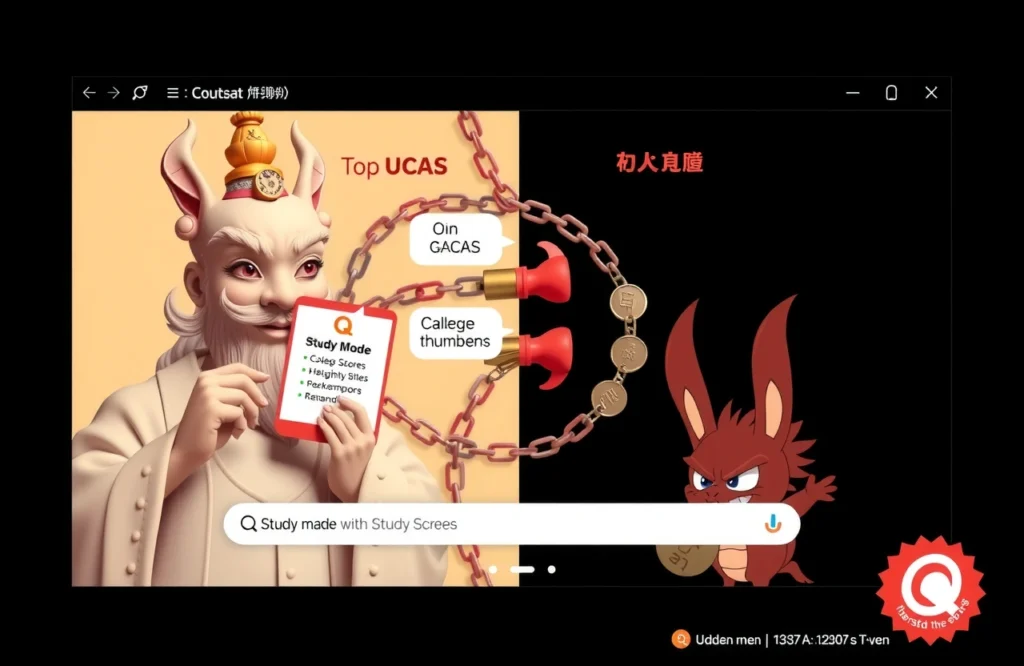The Tariff Ticking Clock
With just days until the July 9 deadline, European Union trade negotiators face mounting pressure to prevent transatlantic commerce from plunging into turmoil. According to Bloomberg sources, Brussels may accept Washington’s proposed 10% flat tariff on most EU exports—a crucial concession designed to avert catastrophic 50% duties that would automatically trigger in two weeks. The compromise hinges on securing vital carve-outs for strategic industries including pharmaceuticals, aircraft manufacturing, semiconductor production, and premium spirits. EU Trade Commissioner Maros Sefcovic (马里奥斯·塞夫科维奇) will lead urgent talks in Washington, hoping to lock in an asymmetric agreement that Brussels views as ‘acceptable though imperfect’ before the countdown expires.
Breaking Down the Trade Blueprint
The Core Tariff Architecture
The proposed framework centers on replacing America’s complex tariff structure with simplified duties:
- – Uniform 10% tariff for 85% of EU exports
– 25% automotive duty reduced through negotiated exemptions
– Aircraft manufacturing deals for lower sectoral tariffs
– Semiconductor producers get preferential treatment
– Aluminum duty cuts from 50% via bilateral quotas
Importantly, these arrangements won’t be definitive treaties but time-bound ‘compliance bridges’—trade stopgaps likely extending past the US election cycle. By accepting the 10% flat tariff premise, EU officials seek to neutralize President Donald Trump’s (特朗普) more aggressive tariff weapons while minimizing economic disruption.
Non-Tariff Leverage on the Table
Beyond tariff reductions, Brussels brings complementary sweeteners to negotiations:
- – Joint AI development declarations
– LNG export commitments as ‘strategic concessions’
– Regulatory harmonization for medicinal products
– Mutual screening of critical investments
These non-tariff provisions allow Brussels to demonstrate value without compromising agricultural standards that remain non-negotiable for France and Eastern states. Recent EU Commission memos emphasize how customized exemptions could protect up to €127 billion in vulnerable exports.
Four Scenarios Facing Negotiators
Acceptable Versus Unacceptable Asymmetry
Diplomatic sources outlined four probable outcomes as Washington talks intensify:
- 1. Accepted asymmetry: The US gets its 10% flat tariff baseline
2. Unbalanced failure: EU rejects last-minute US demands
3. Deadline extension requiring White House approval
4. Full tariff war triggering mutual retaliation
The fourth scenario activates Brussels’ €48 billion retaliatory tariff menu—with Kentucky bourbon, Florida citrus, and California wine already identified as primary targets.
Automotive Sector Rescue Measures
German automotive exports remain Brussels’ toughest negotiation point:
- – Partial exemption from existing 25% US vehicle tariffs
– Bicycle parts derivatives benefiting from indirect carve-outs
– Wheel assembly deals protecting Eastern European hubs
– Defense-related vehicle component exceptions
According to Deutsche Bank analysts, successful automotive negotiations could prevent €29 billion in projected German industry losses.
The Geopolitical Chessboard
Hidden Semiconductor Strategy
Technology export talks center on chip dominance:
- – ASML lithography equipment preferential treatment
– Reduced duties for Berlin’s silicon wafer exports
– Dublin semiconductor packaging exemptions
More importantly, Dutch Prime Minister Mark Rutte (马克·吕特) previously negotiated ASML concessions that now serve as templates for the broader European negotiating position.
Beyond Tariffs: Economic Security Cooperation
The modernized trade approach incorporates security elements:
- – Coordinated critical mineral acquisition systems
– Joint screening of third-country tech transfers
– Dual-use goods export monitoring framework
– Members-only export licensing portals
These elements respond to US National Security Advisor Jake Sullivan’s (杰克·沙利文) doctrine of ‘small yard, high fences’ economic security.
Strategies for Global Corporations
Supply Chain Preparations
Multinationals face operational complexities:
- – Auto manufacturers diversifying final assembly
– Steel exporters pursuing domestic transformation
– Spirits companies accelerating premium pricing
– Exporters building tariff-absorbing inventories
Regulatory Loophole Navigation
The provisional deals contain exploitation-proofing:
- – Substantial transformation standards preventing tariff arbitrage
– Reformed origin protocols ensuring technology integrity
– Aviation carve-outs requiring minimum EU-sourced materials
FIAT-Chrysler CEO Carlos Tavares (卡洛斯·塔瓦雷斯) confirms manufacturers already reconfigured supply chains anticipating outcome volatility.
The Final Path Forward
For all stakeholders, the decisive fortnight begins:
- – EU delegates arrive in DC July 1 for tech-standard talks
– Senate Finance Committee reviewing draft provisions
– EC conducting constituency briefings July 3
– Final Trump administration review tentatively July 8
Market indicators show unusual stability—reflecting consensus the temporary 10% flat tariff solution will likely hold. Expect phased implementation enabling aerospace and pharmaceutical exporters to quickly capitalize on concessions. Invest now in tariff-sensitive sectors as deal regulations become clearer, and monitor French agricultural reservations that could still unravel negotiated terms. Ultimately, Brussels appears positioned to swallow bitter medicine today to avoid deportation tomorrow—protecting Europe’s industrial backbones through strategic pragmatism.




